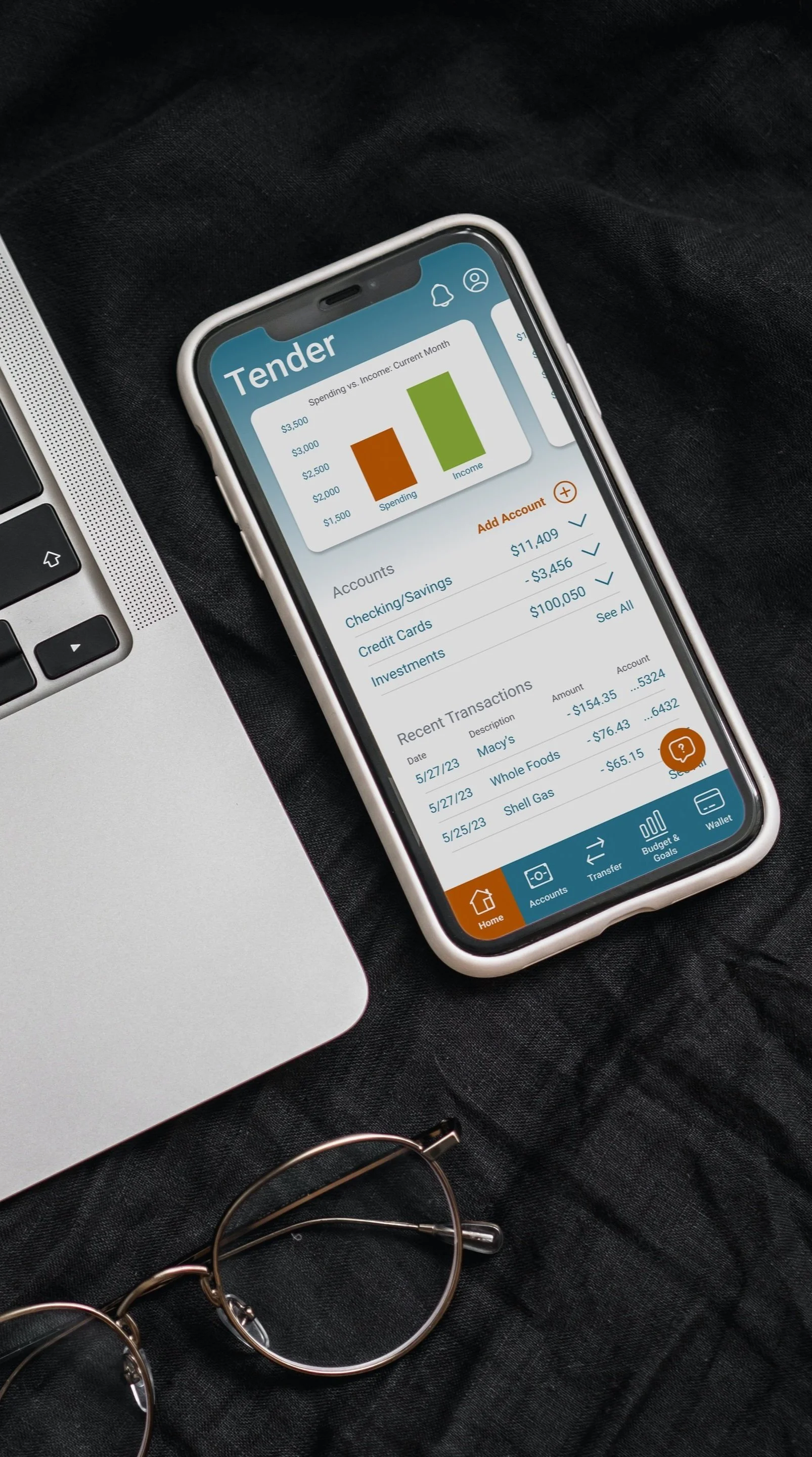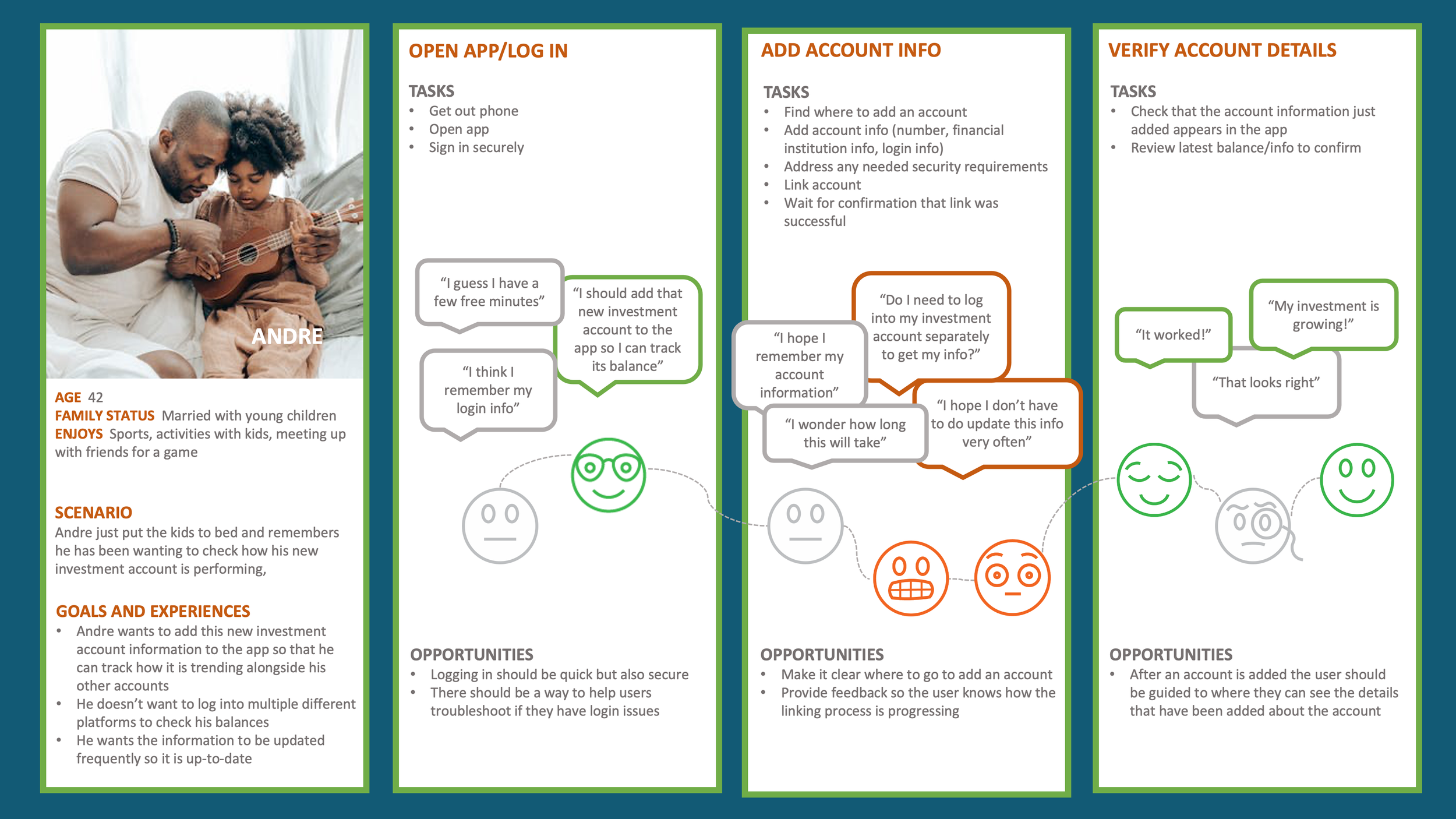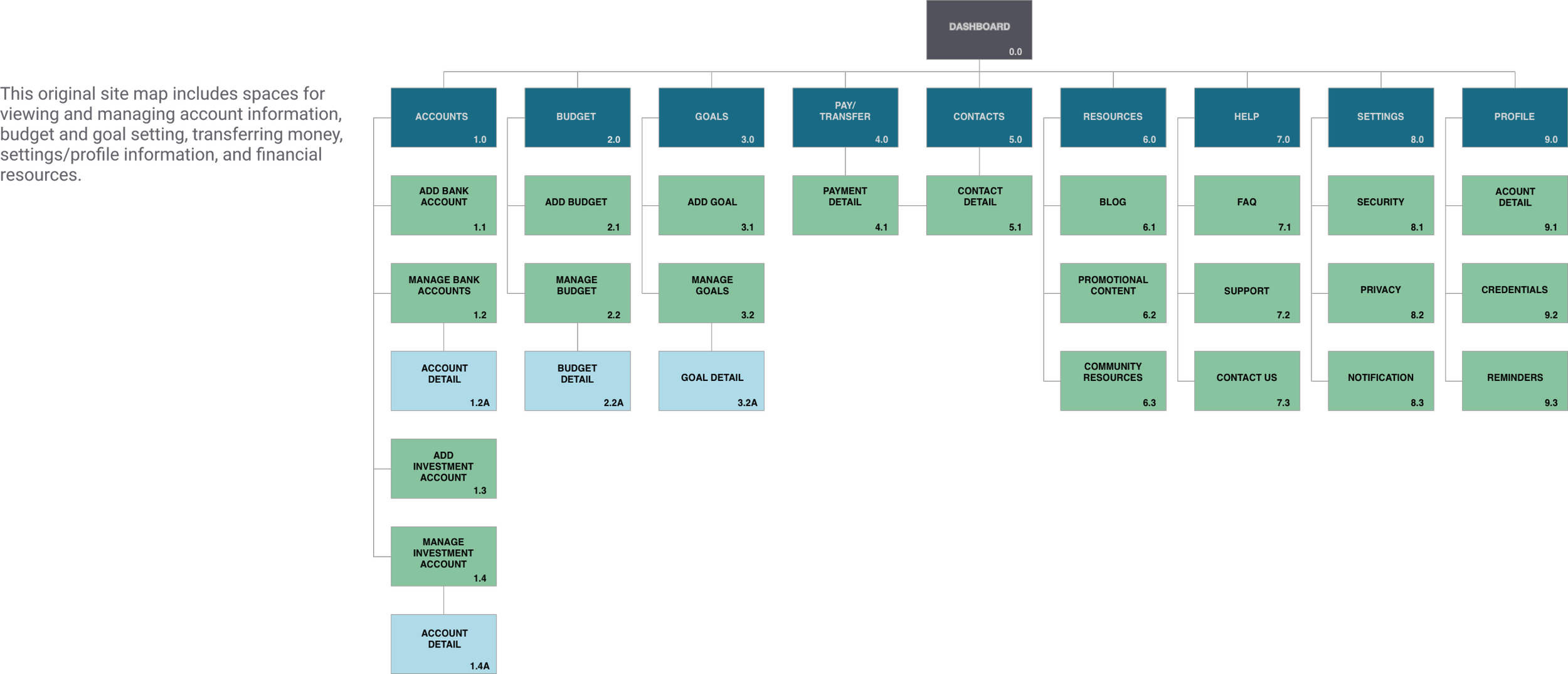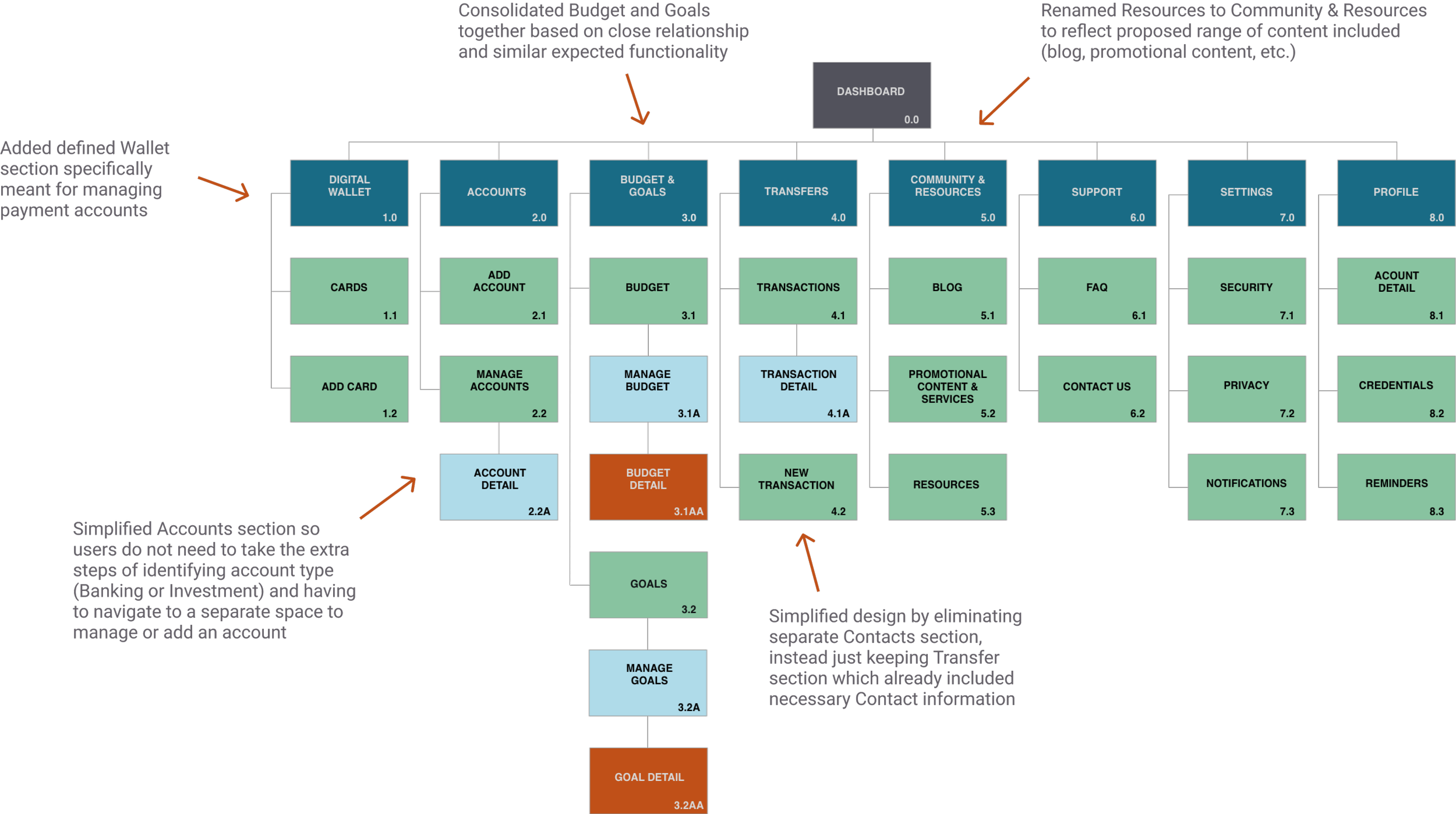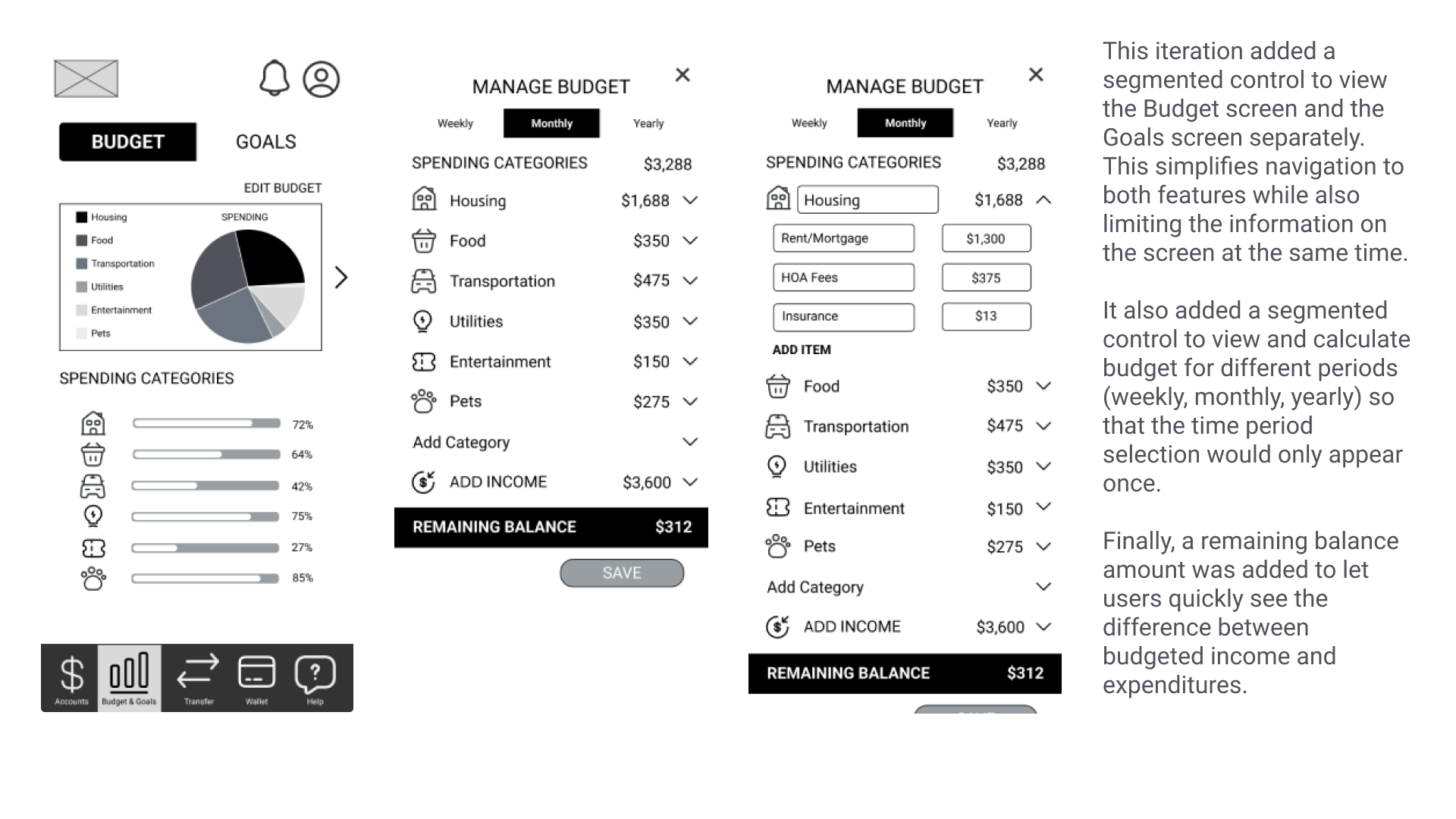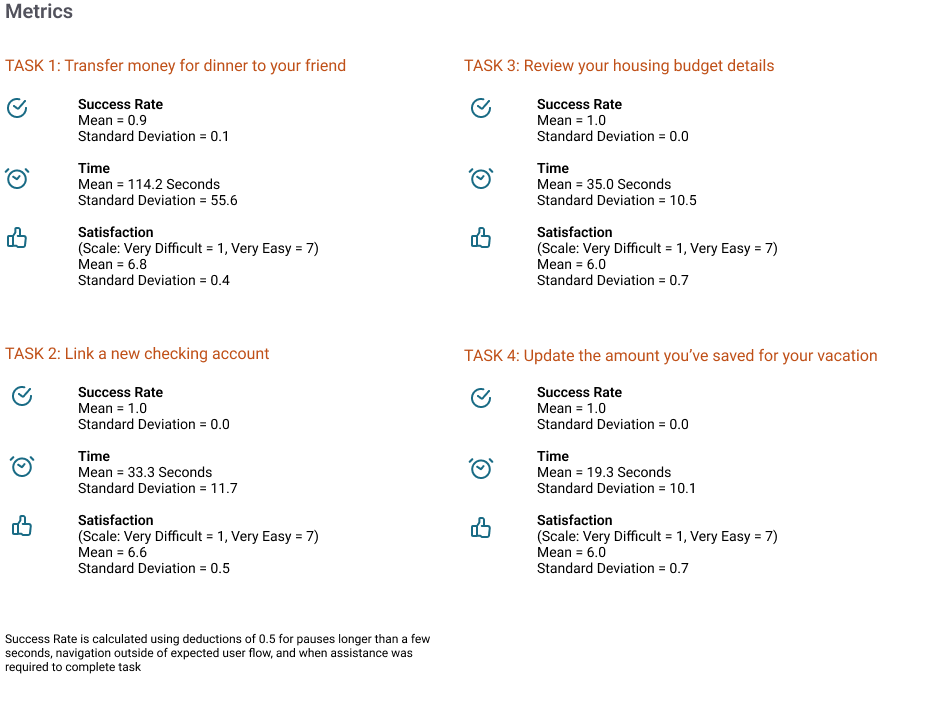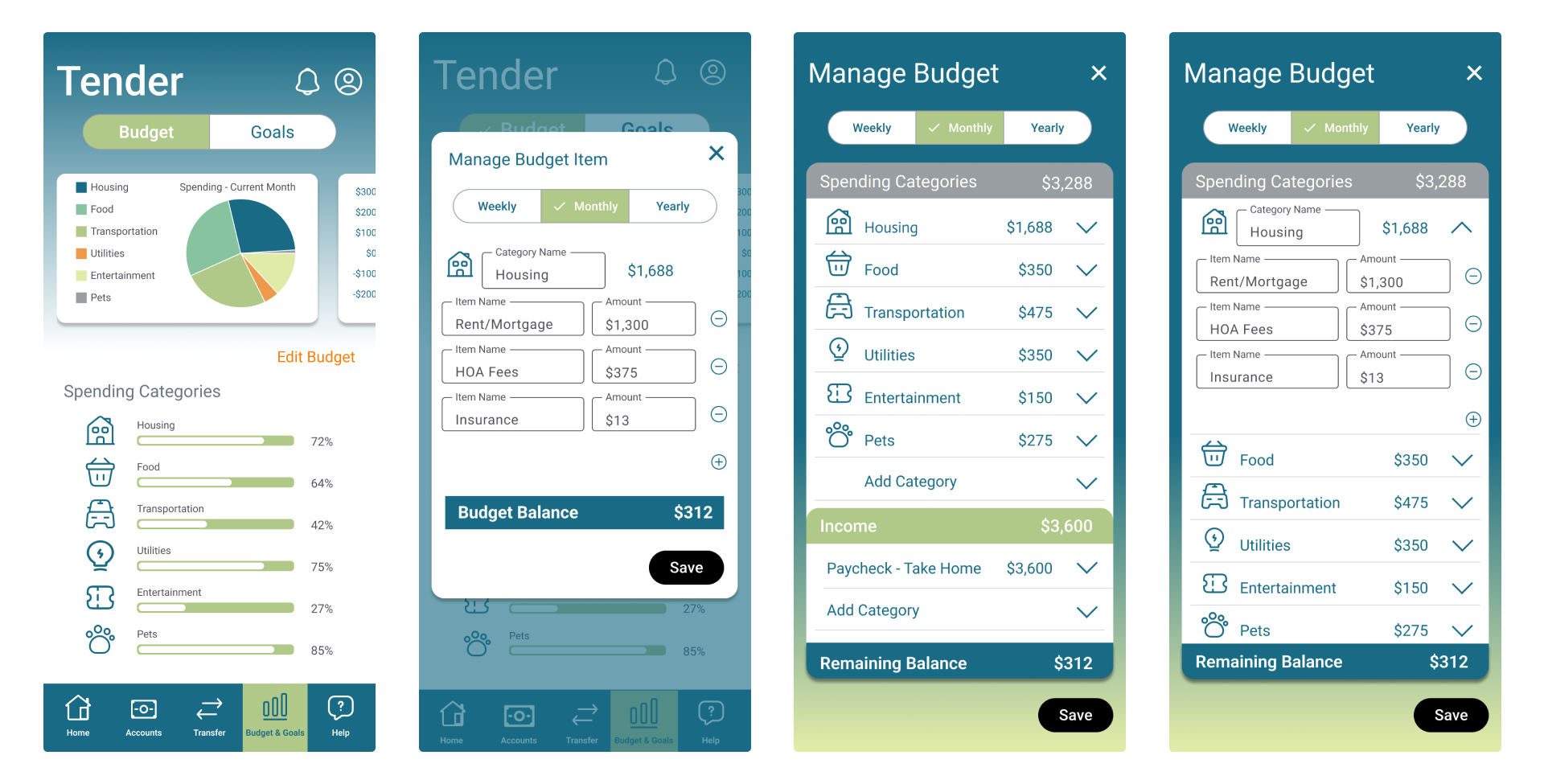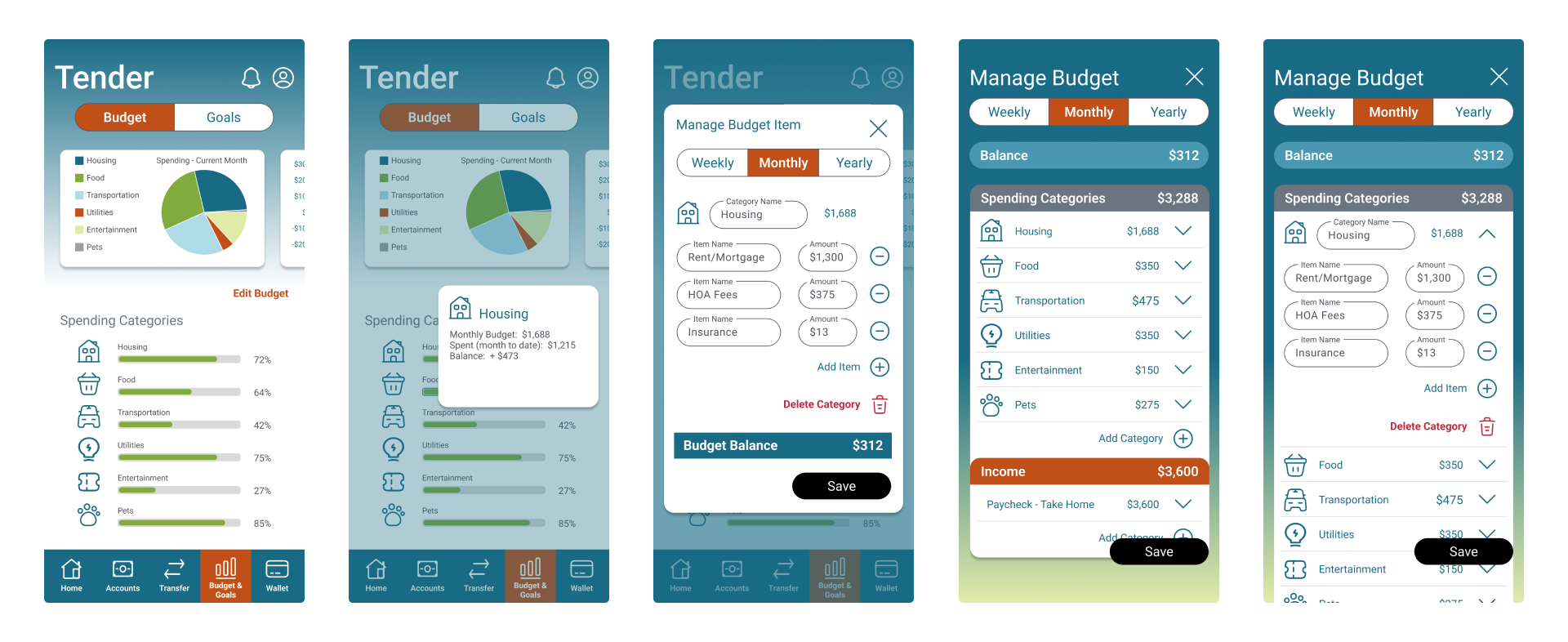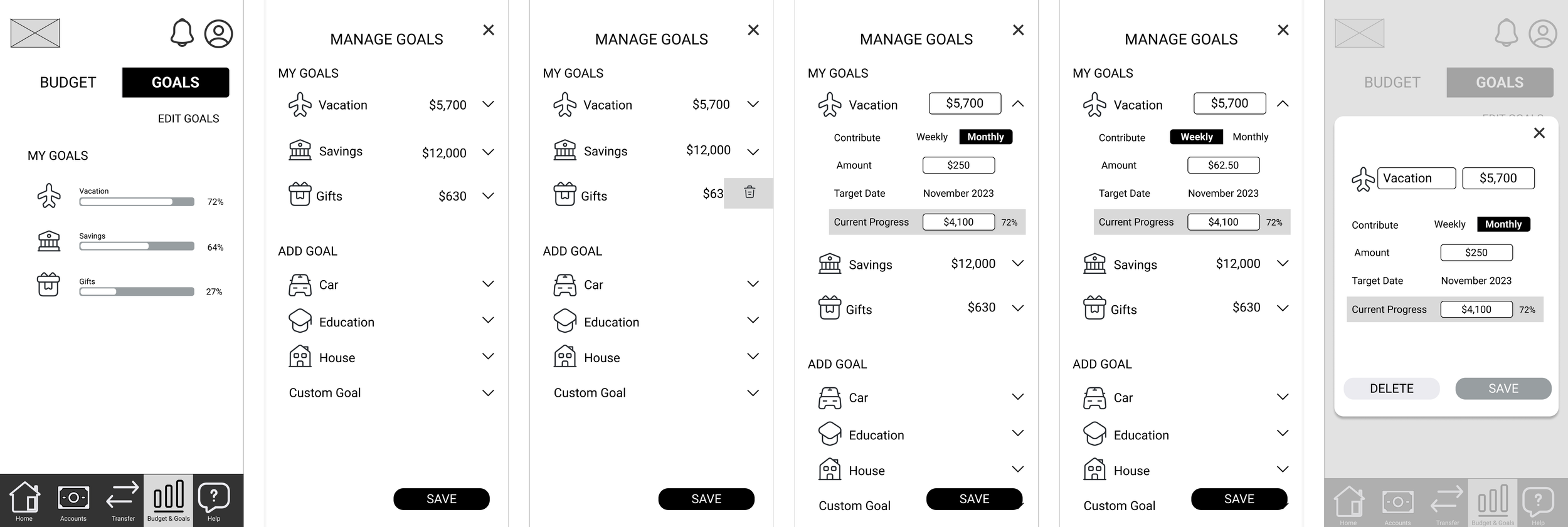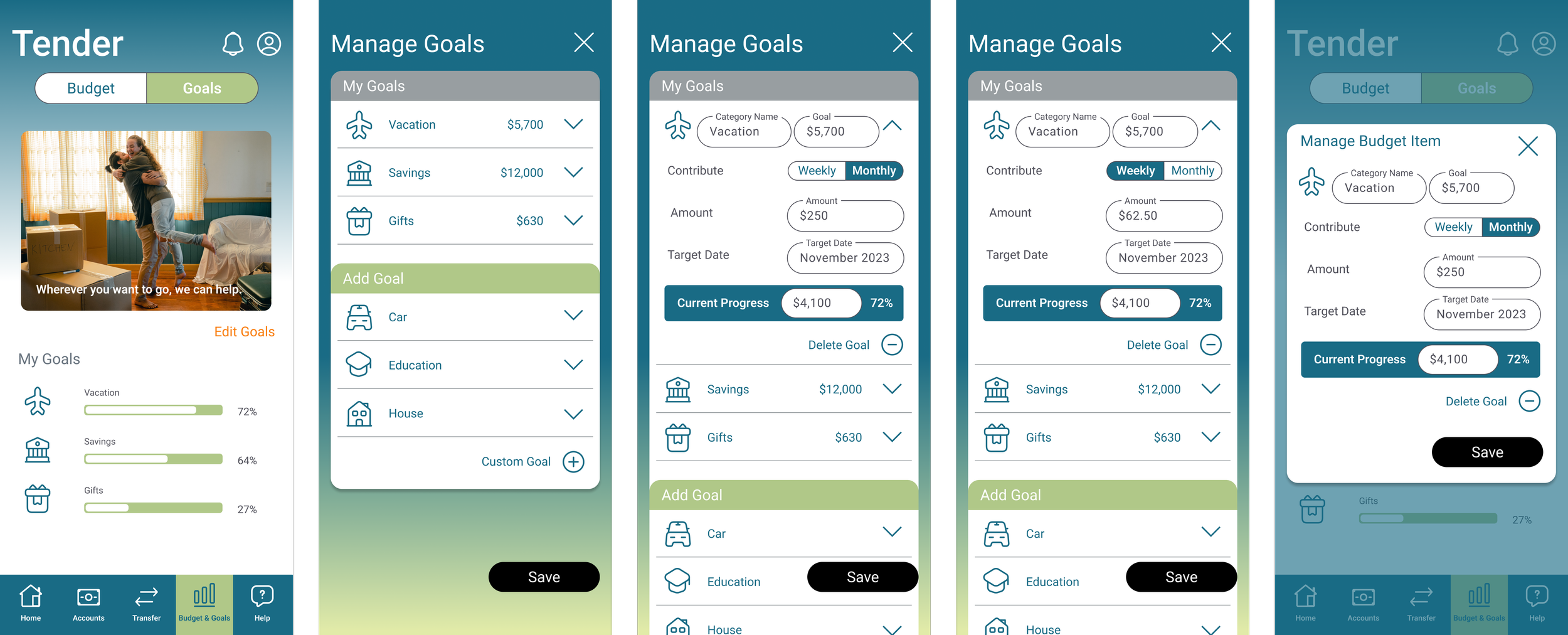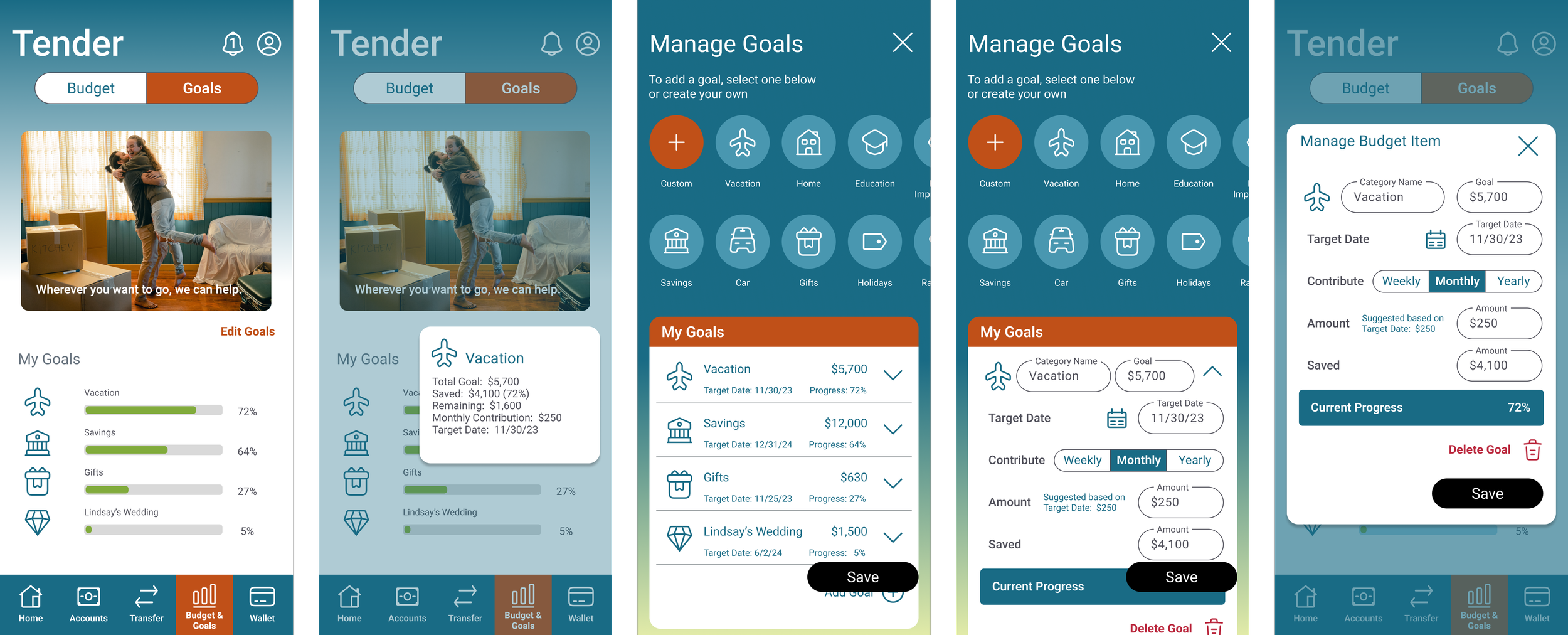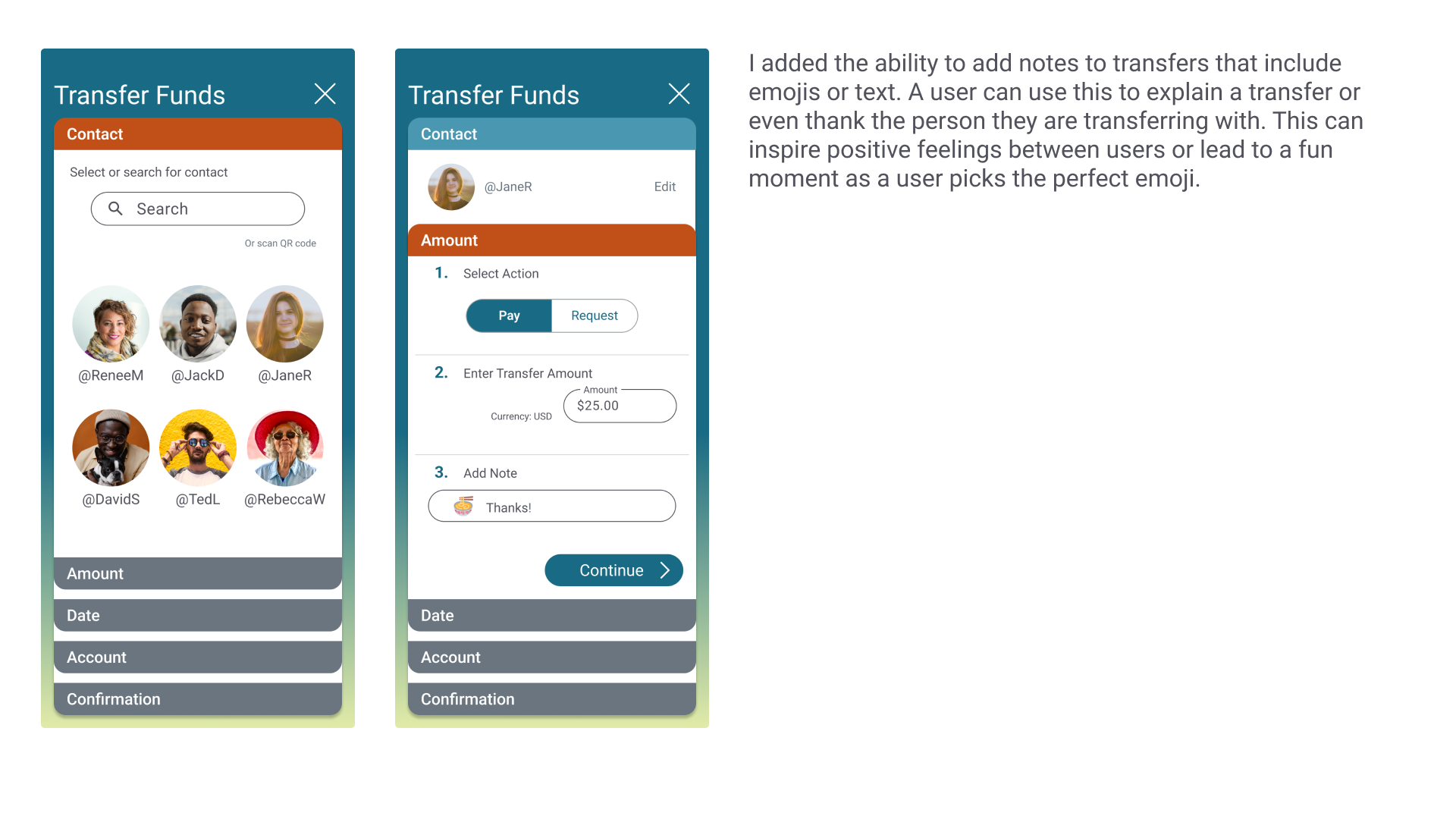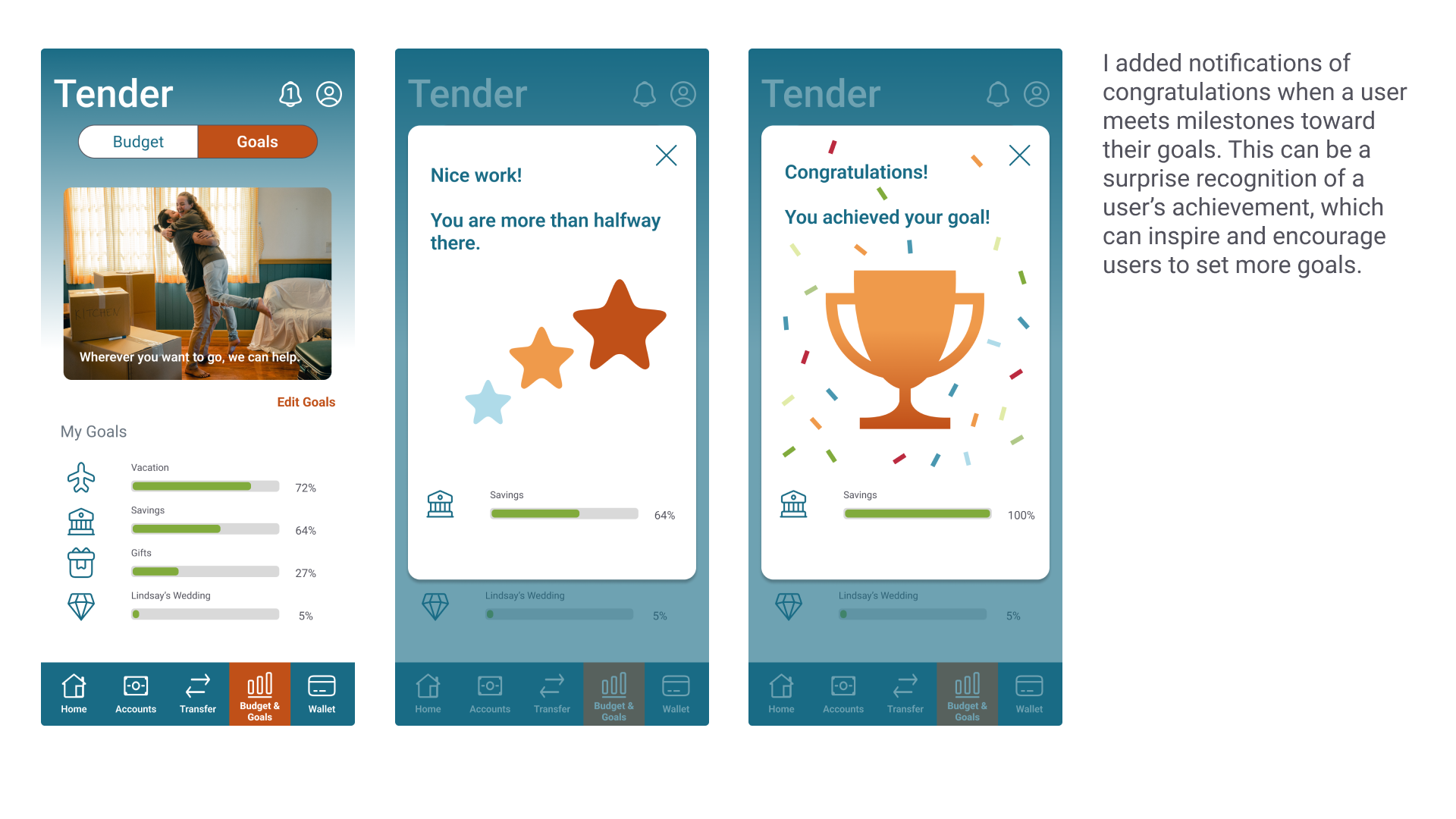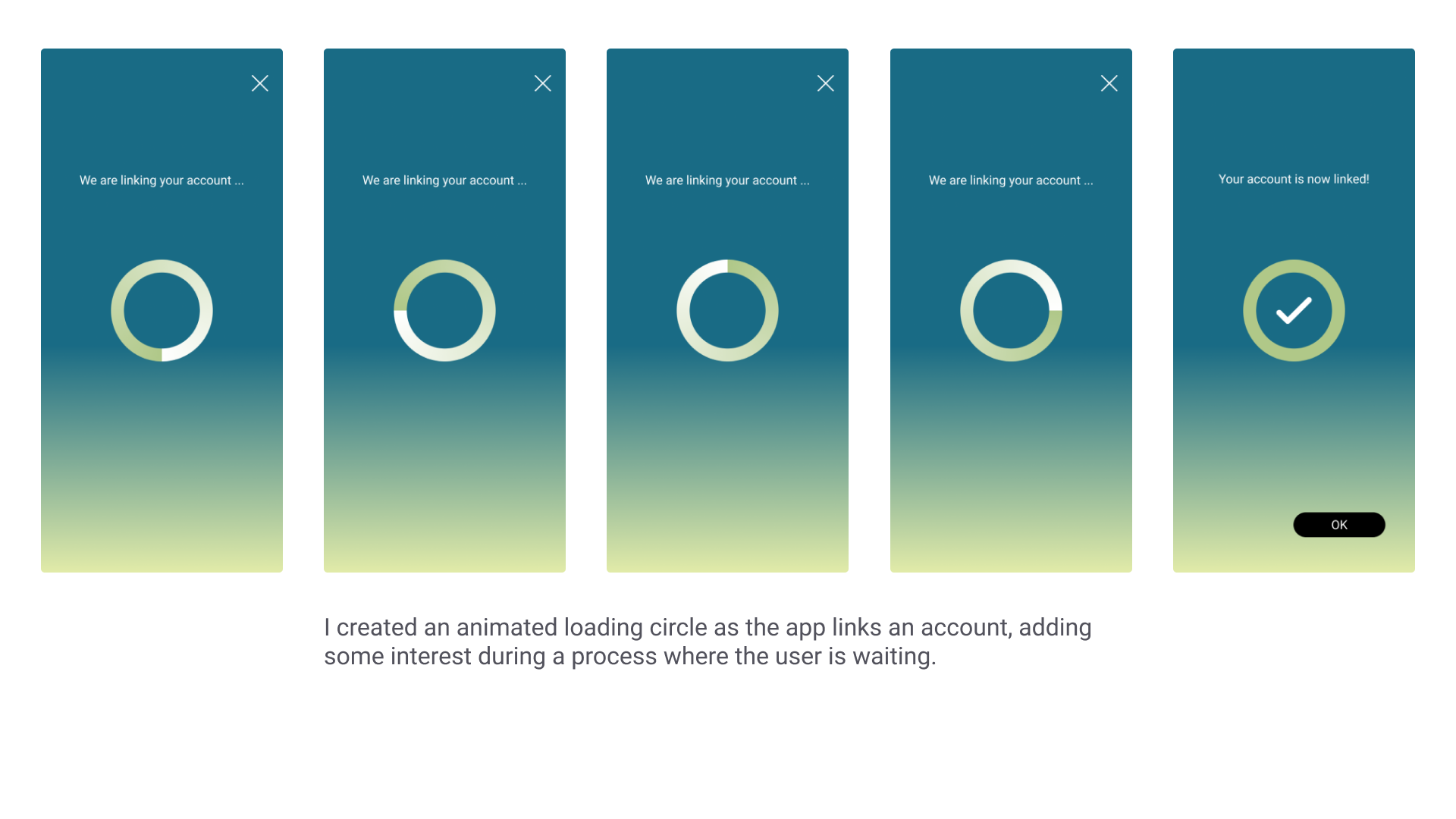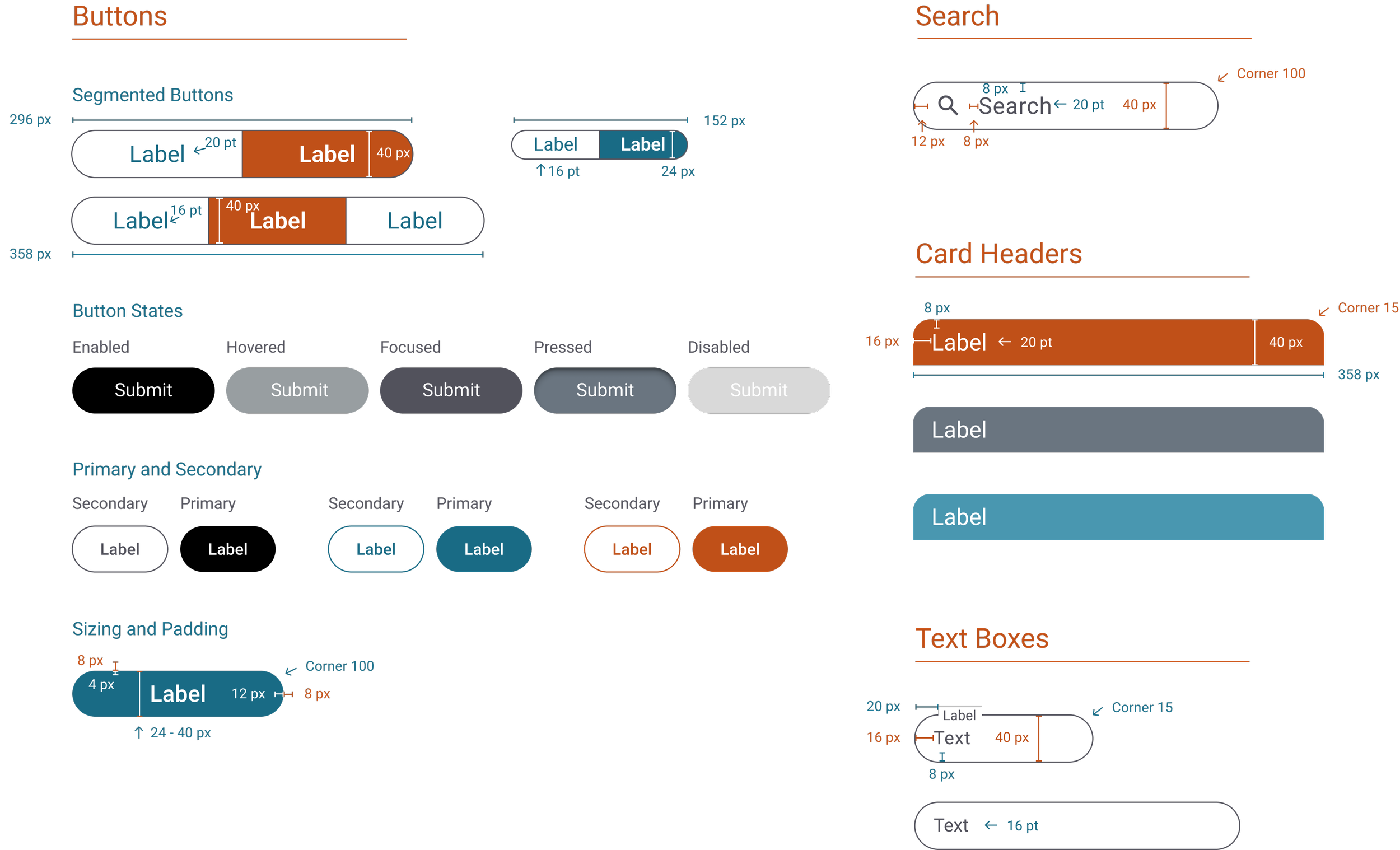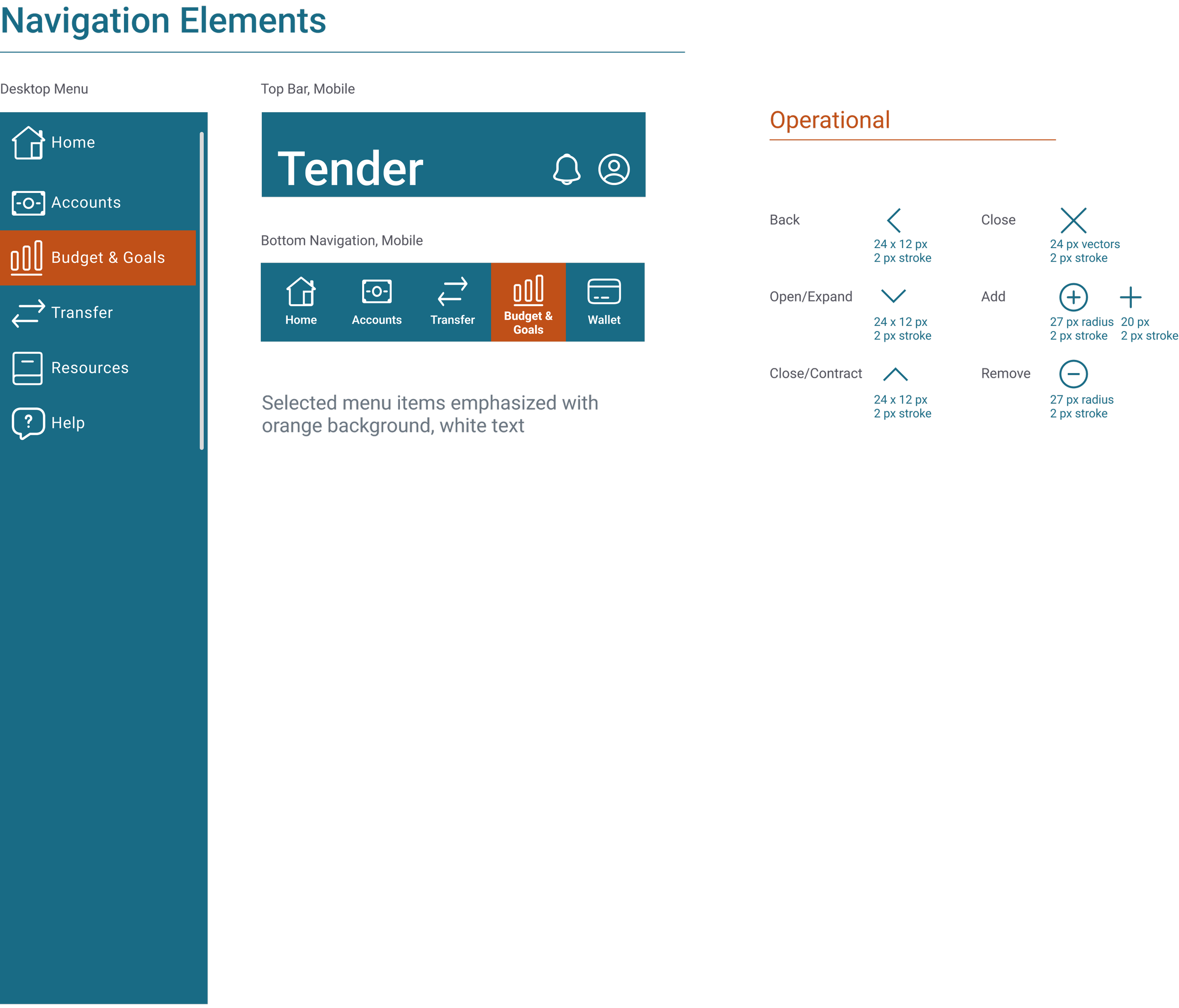
Tender Project Overview
Project Context:
This project originated as part of CareerFoundry’s User Experience Design program. A project brief for a digital wallet application was provided with key feature requirements, including the following:
A form of security to authenticate a transaction
A feature allowing users to send/save/move money
A budgeting or goal setting feature
Problem Statement and Objective:
Tender’s users need a way to budget, transfer and manage their money because it is hard to keep their financial information organized in one place and stay on top of what is happening with their finances.
The business objective would be to have a certain number of users establishing budgets and transferring money with other users via the application.
My Role:
Completed all deliverables, including user research, wireframes and prototypes
Work completed with feedback from CareerFoundry tutor and fellow students
Duration: February to October 2023
Methodologies/Deliverables:
Competitive Analysis
User Stories
User Interviews
Surveys
Affinity Map
Personas
Empathy Map
User Journey Maps
User Flows
Card Sorting
Site Map
Wire-framing and Prototyping
Usability Tests (Test Plan, Test Script, Test Report)
Preference Tests
Style Guide
Tools:
Figma
Sketch
Optimal Sort
UsabilityHub
Google Forms and Google Calendar
Adobe Illustrator and Photoshop
Microsoft Office
Zoom
Paper, pen, whiteboard, marker, sticky notes
Business Requirements Document:
Project Process
What the Competition Is Doing
Tender’s Unique Value Proposition:
Offer easy transfer capability ALONG with engaging money management tools
In order to understand what services and products already exist in the digital wallet/money management space and how my project might differentiate itself, I performed a competitive analysis. This included the following:
Identifying Competitor’s
Key Objectives
Market Advantage
Overall Strategy
Marketing Profile
SWOT Analysis
UX Analysis of Competitor’s Offerings
Key Takeaways:
Offer an opportunity for some personalization/engagement, like adding notes describing a transfer
Add more flexibility to transfer process by adding ability to schedule a transfer
Combine transfer capabilities with thorough money management tools
What Users Are Experiencing
Overview
I completed research to learn about potential users, the issues these people experience managing their money, what tools they are currently using to manage their money, and how this project might be able to help manage their money.
Key Insights
Pain Points
Having to log into multiple sites/apps to review finances despite is not ideal when people lead busy lives, so having one place for users to see information about various accounts could be helpful.
Survey participants indicated unexpected expenses (64%) and spending more than they probably should (57%) were the biggest challenges to managing their finances. Perhaps users would benefit from encouragement to develop an emergency fund, information about planning for unexpected costs, and a feature alerting them when their spending is more than expected.
Current Tools
79% of survey participants transfer money between friends and family via apps, so this functionality is used fairly widely.
Only 64% of survey participants agreed that current tools used for managing and transferring money worked well for them, so people could be open to using other tools.
Budgeting
Interview participants had similar spending categories for budgeting, so offering common spending categories as part of a budget-setting process could be helpful, including the following:
Housing
Groceries / Dining Out
Transportation
Utilities
Travel
Most interview participants say they track expenses to some degree, but at least two indicated that this was more important when they were younger, less financially stable, or in a temporary circumstance that required them to pay closer attention to spending. It will be important to keep in mind that different life stages and circumstances will impact the needs of users and how they would use the application.
Three interview participants used spreadsheets to manage their finances, despite some noting they are hard to maintain. One benefit of spreadsheets is flexibility with budget categorization, as users may want to look at their spending habits differently from others. Providing custom categorization in the app could provide a similar benefit.
Savings
Offering a way for users to track progress toward their savings goals could be useful, as 93% of survey participants had a savings goal, with the following being the most commonly selected goals:
Emergencies (57%)
Vacation (57%)
Retirement (50%)
House (43%)
Emotions/Feelings
Participants have concerns about security and sharing their information, as four participants mentioned security while discussing financial management tools.
Money is a sensitive topic to users, so offering encouragement and options to control displays of information or customize reminders could help the user experience. The app should avoid making users feel discouraged about their financial position.
Women in particular may feel they need resources or may be less confident regarding money.
Developing Personas
Based on the feedback from interviews and surveys, I began to define two personas that represent distinct characteristics of potential target users. These personas are at different life stages and have different financial confidence levels and financial goals. Through the design process, I aimed to keep both personas in mind.
Diving Deeper with the Personas
In order to dive into the mindset of these personas further, I created empathy maps for each, defining the tasks, feelings, pain points, goals and influences they face when managing money.
While Natalie might be less confident with her finances and be primarily concerned with budgeting, overspending and basic financial tips, Andre is a bit more financially stable but is concerned about time. He is looking for convenient and quick financial management tools and is excited to see progress toward financial goals.
Detailing the User Journey
For my personas, I created user journey maps to define the process and context of target users utilizing key functionality in the application. This key functionality was the result of my user research and outlined in the project brief.
Writing User Stories
With key functional requirements and personas identified, I drafted initial user and job stories to support proposed key features.
Create a Dashboard
User Story: “As a user, I want to see all of my current account balances on the dashboard screen, so that I can immediately check the balances on multiple accounts in one place.”
Job Story: “When I want to quickly check the balances of my checking, savings and investment accounts, I want to see the balances of those accounts on a dashboard after I log in, so I don’t have to go to multiple pages or scroll far to get this information.”
Add a Transaction Filter
User Story: “As a user, I want to be able to filter my transactions by type, so that I don’t have to look through a list of transactions that are not relevant and I can quickly access the information I want.”
Job Story: “When I want to check how much I paid towards my credit card debt, I want to be able to filter my transactions to payments, so I can more easily see my recent credit card payments.”
Allow User to Set Spending Targets for Budgeting
User Story: “As a user, I want to be able to make a budget in the app where I create targets for key spending categories each month, so that I can see how my spending compares to the budget I set.”
Job Story: “When I need to stick to a budget and stay within certain spending limitations, I want to be able to track how my spending compares to my planned budget each month, so I can see if I am overspending.”
Diagramming User Flows
The next step involved translating user journey maps into user flows for key functionality, asking the following questions:
What steps in the process need to be included?
How can I allow users to accomplish the task efficiently?
How does this flow compare to the competition?
Updating the Site Map
Sketching and Prototyping
Testing the Prototype
Overview
After completing a mid-fidelity prototype, I conducted usability tests to evaluate key functionality (linking account, transferring money, managing a budget, and updating a savings goal).
Research Methods
6 participants recruited from personal network
Participants had similar characteristics to personas (life stage, marital status)
Tests conducted in person and remotely
Analysis included calculating a success rate and creating an affinity map
Test also included post-test survey (Single Ease Question with a 7-point scale for each task)
Goals & Objectives
Assess the learnability of app for new users interacting with the project prototype
Observe and measure how successfully users complete the primary functions of the application
Evaluate the efficiency of user flows
Evaluate the interest in using applications like this
Gain feedback on general impressions and usability to make improvements, generate ideas for future functionality, and identify areas of confusion or concern
Test Documentation
Test Plan and Report Link
Test Script Link
Tasks Included in Test
You are out to dinner with a group of friends. One of your friends picked up the check, and you want to pay them back for your portion of dinner. Using the app, transfer money for dinner to your friend.
You want to link a new checking account to track expenses and review your balance in the app. Using the app, link a new checking account
You want to review and edit your budget because you have a change in your housing expenses. Using the app, review your housing budget details.
You want to update the amount you have saved toward your vacation goal. Using the app, review and update the amount you’ve saved for your vacation.
Insights & Results
Participants were able to complete all tasks and indicated tasks were easy to complete based on responses to Single Ease Questions with a 7-point scale for each task. Participants also reiterated the usefulness of the main goals of the prototype (showing overall status of finances, offering budget and goal setting help). However, participant behavior demonstrated the need to adjust the edit functionality for budget and goal setting. As the transfer task took the most time overall, I also wanted to review that process flow for clarity and efficiency improvements.
The following is a list of key challenges/errors experienced by the participants to address in future iterations:
Issue 1: Four users had tendency to click on budget and goal category icons to edit (rather than “Edit” text)
Remedy = Add functionality where edit window opens when user clicks on category icon
Issue 2: Transfer flow can be more efficient and clear, demonstrated by length of time the task required
Remedy = Provide more instruction for user, review ways to clarify and simplify stepper pattern
Issue 3: Three users did not understand how to access dashboard (Home)
Remedy = Add Home icon to bottom navigation bar to access dashboard
Issue 4: Two users did not see "Add Account" option right away on Accounts screen
Remedy = Increase font size and select color that will make text stand out
Issue 5: Three users expressed lack of clarity between how debits and credits are displayed
Remedy = Ensure there are “+” and “-” indicators for all transaction amounts
Iterating on the Design
Based on an issue identified during the usability tests (Issue 1: Several users had tendency to click on budget and goal category icons to edit), I added new functionality to the prototype. On the Budget and Goals screens, a new option allows an editing window to appear when a user taps on an icon. Previously, users would have to select the “Edit Budget” and “Edit Goals” options. This makes editing more efficient.
Increasing the Prototype Fidelity and Iterating
Initial high-fidelity prototypes used lighter green and gray colors, which needed more contrast when used as background for light text to meet WCAG accessibility guidelines.
Peer feedback also indicted some confusion based on the colors used for the progress bars on the main Budget screen. Peer feedback also suggested moving the important budget balance information near the top of the Manage Budget screen.
Updated High-Fidelity Prototype
The updated high-fidelity prototype has new colors to ensure contrast meets accessibility standards. This included updating the colors of the segmented buttons, navigation bar, card headers, and some text. I also updated the colors of the progress bars to make them more clearly indicate progress based on user feedback. In addition, I added an interaction to the progress bar where users could press on a bar to see more detailed information about the spending category.
Other changes included updating the location of the balance information on the Manage Budget screen to a more prominent position at the top and adding additional functionality to delete spending categories.
How the Transfer Process Evolved
How the Goal-Setting Process Evolved
Designing for Engagement
As I continued to refine the high-fidelity prototype, I sought to include engaging features for users with the goal of creating positive emotions and encouraging continued use of the application
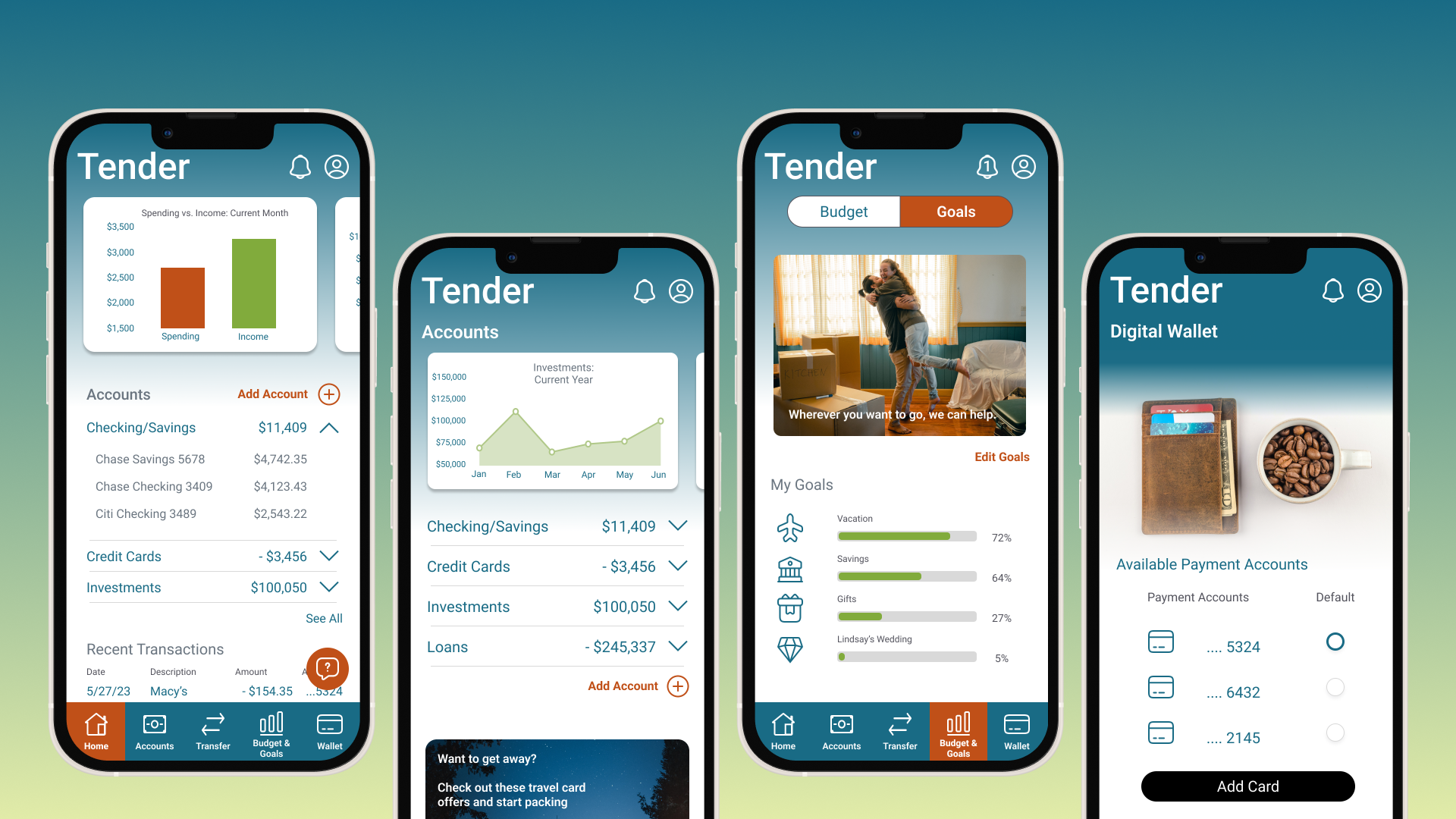
Check Out The Prototype
Design Documentation - Style Guide
Language and Voice
Language
Language should be professional but accessible and easy to understand (a high school student should be able to understand)
Avoid unexplained financial jargon or acronyms
Tone of Voice
Inviting
Friendly and Encouraging
Sensitive to people’s fears about money
Should not make people feel bad/fearful about their financial position or goals
Dos and Don’ts
Do encourage and inspire
Don’t forget people have their own goals and financial situations, and it’s not our place to judge or promote a particular lifestyle
Don’t avoid humor
Do stay professional
Typography
I chose a sans serif font to have a simple, clean and modern look. This type of font works well for both text and numbers.
I did not want the font to distract or create additional visual clutter, because some screens will include quite a bit of information and utilize the typography in various ways (headings, instructions, chart labels, etc.).
After testing color contrast, I also included suggested text and background color combinations.
Color
Primary colors of blue and green are meant to invoke trust, stability, and money (fitting for a financial application).
Orange is meant to be warm, uplifting and rejuvenating.
Grey and black are primarily meant for text and other elements to stand out against light backgrounds.
Other UI Elements
Iconography
Icons selected are primarily teal or white in color. Emphasized or warning icons are in orange or red.
Stroke should be about 2 px, and icons generally fall within square of 30-36 px. Minimum/maximum width and height between 24 to 36 px on mobile.
Imagery
Tender’s imagery should be relatable rather than aspirational. Rather than suggest a user’s goals should be luxurious purchases or exotic vacations, we want the user to feel inspired yet be the driver of what they want their own future to be. People in our images are enjoying themselves but a bit distant, leaving space for users to imagine their own goals. Similarly, our imagery can be at a close point of view (whether it is of an object or hands taking action) so that users can relate and place themselves at the center of their own journey. Imagery should be either neutral lights and darks or contain blues, greens, and warm golds/oranges to align with color palette.
Retrospective
Key Learnings
Pay attention to cognitive load and visual clutter by utilizing tools like segmented controls and show/hide functionality
Provide the user feedback (task completion, navigation signals, progress updates) to keep users informed
Leave plenty of time to recruit research participants that are in a good position to provide feedback relevant to your target users
Test color contrast early to ensure design meets accessibility guidelines
Usability testing leads to vital improvements and ideas
Challenges
Since this project was for a class, there was not as much opportunity for discussion with colleagues or flexibility with process/brief requirements as there might be with other projects
Ensuring people were comfortable talking about a sensitive topic like their finances
Ensuring enough time was allotted for recruiting and scheduling research participants as well as related administrative tasks for testing
Becoming more familiar with certain tools (Figma, Adobe Illustrator and Photoshop)
Making adjustments to account for color contrast after project had already gone through a few iterations
Future Steps
Potential further steps include the following:
Build desktop prototype
Prototype additional content
Resources (for desktop)
Help/Support
Test updated navigation
Add additional functionality
Reminders
Custom categorization of transactions into spending categories
Bill and subscription tracking
Ways to collaborate with a partner or roommate
